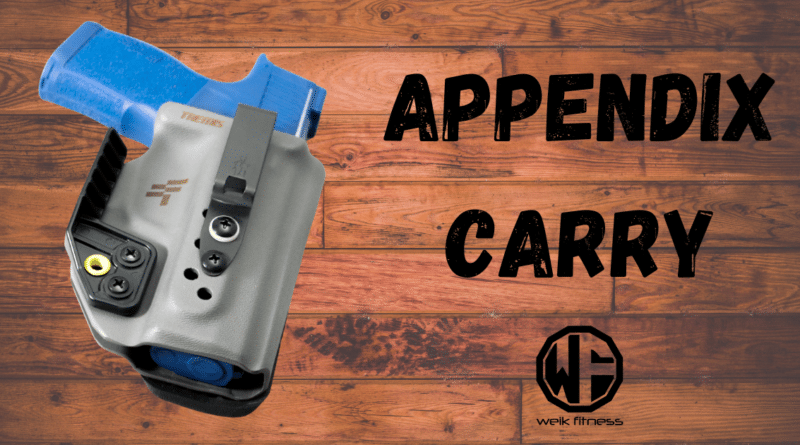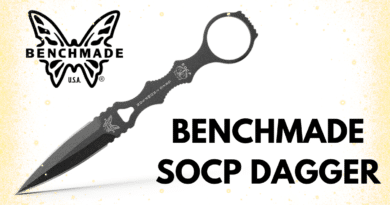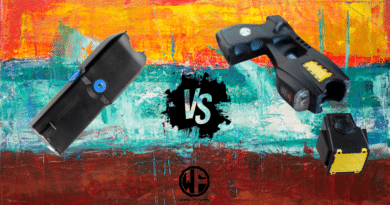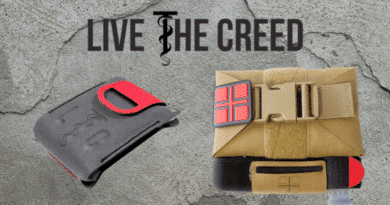Appendix Carry: Why It’s the Best Concealed Carry Position
Finding the perfect way to discreetly carry a handgun can be challenging. You want it secure, yet a way to carry it that is accessible at a moment’s notice. When I first started carrying a gun, appendix carry was the last place you’d find my gun placed. After all, why would I point a gun at my junk, right?
Well, you could consider me a noob, and I didn’t know any better on how to properly place the firearm to make appendix carry work for me and my body type.
For those who have no idea what I’m talking about other than reading me say about pointing a gun at my twig and berries, the appendix carry approach involves placing your firearm in front of your hip inside your waistband.
My EDC journey has shown me that appendix carry provides unparalleled speed and concealment. Backed by personal experience and extensive research, this article aims to guide you through adopting appendix carry to meet your concealed carry needs.
From selecting the right holster and ride height to executing swift, safe draws — every essential detail is covered in this article to help you better understand why you may want to carry in this fashion.
Let’s dive into making your concealed carry experience better from all angles and explore the advantage to appendix carry.
Table of contents
- Key Takeaways
- Understanding the Appendix Carry Position
- Key Advantages of Appendix Carry
- Situational Benefits of Appendix Carry
- Overcoming Common Misconceptions & Disadvantage of Appendix Carry
- Choosing the Right Gear and Appendix Carry Holsters for Appendix Carry
- Techniques for Effective Appendix Carry
- Are You Ready to Try Appendix Carry?
Key Takeaways
- Appendix carry puts your gun in front, making it fast to reach and hide under clothes. It works well for quick access and staying low-key.
- People used appendix carry a long time ago. Today’s holsters make it safe and comfy. Good gear is key to carrying this way without issues.
- Safety worries can be beat with the right handling and equipment. Practice makes using appendix carry safe and easy, even when sitting or driving.
- Choosing the best holster, gun, and belt matters a lot for comfort and safety in appendix carry.
- Safe ways to put your gun back in its holster help prevent accidents. Taking it slow is important for being safe.
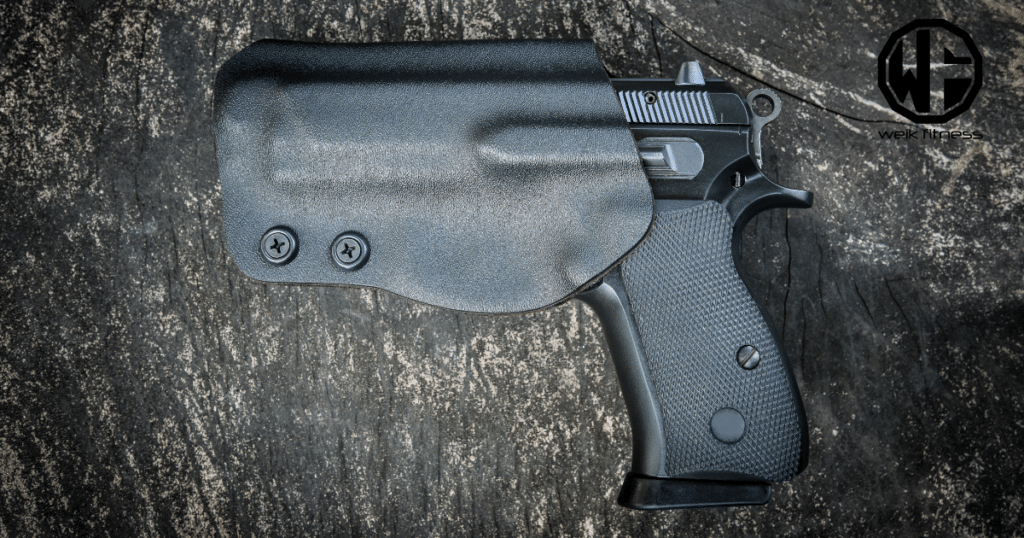
Understanding the Appendix Carry Position
Appendix carry refers to the method of carrying a concealed firearm in front of the body, usually within the waistband. This approach has evolved from historical practices and gained popularity due to its advantages in regard to rapid access of the weapon and enhanced concealment.
Let’s look at the appendix carry basics to help you better understand what first started this movement and method to carry the gun on the front of your body rather than at the 5 o’clock position (carry behind the hip) or even the 3 o’clock position (strong side carry or right hip carry).
Definition of Appendix Carry (AIWB Carry or Appendix Inside the Waistband Carry)
When I carry my firearm, I appendix carry. This means I put it right in front at the 1 o’clock or 12 o’clock position, close to where my belt buckle would be. I keep it inside the waistband, which is also called AIWB or appendix inside the waistband.
One thing I’ve noticed is how well it hides under my clothes compared to other spots, like behind the hip. When I carried behind the hip, I found bending over caused my gun to be exposed (no bueno).
With the appendix carry method, I can get to my gun really fast with either hand. Plus, sitting down isn’t a problem. Since I’m pretty slim and fit, it fits me just right and feels comfortable most of the time.
Using a good holster and belt makes a big difference, too, when it comes to everyday carrying your carry gun.
Historical usage and evolution of proper appendix carry
Appendix carry isn’t new. It’s been around for a long time. Think back 50 years or more — people were using thin holsters and sometimes running without a holster at all to keep their guns hidden but close.
They called not using a holster “Mexican Carry.” I’ve learned this from lots of research and talking to folks who’ve been around longer than me. Cops undercover needed ways to hide their weapons without bulges showing, so they got creative with how they carried.

Over the years, as gun owners demanded better ways to stay safe while carrying discreetly, holster designs improved a lot. Now, we have AIWB holsters that are comfortable and secure.
I tried several myself before settling on one that felt right for my Glock 19 or Sig P365X (which I have since turned into the Spectre Comp) — it was like night and day compared to the old options out there!
This evolution has made appendix carry popular again among people who love EDC (everyday carry) because it blends safety, comfort, and quick access perfectly.
To further establish the point that appendix carry is not just a fad, I reached out to my good friend and firearms instructor Garry Marr of Tremis Dynamics and asked if he had any insight into the topic that I could share in this article, he mentioned:
“There’s no denying that appendix carry has a lot of distinct advantages. Twenty years ago, many folks said that it was a fad, but it’s obviously here to stay.
I resisted switching for years. The juice wasn’t worth the squeeze for me. As it turns out, there isn’t a single cut-and-dry answer to making the AIWB position work for everybody. The obvious point is the size of the pistol, but smaller isn’t always better; well, in some dimensions, it is, and in others, it’s not.
There are a lot of different features offered on AIWB holsters, some of which are beneficial in some instances. Clips vs soft loops, rotating or adjustable attachment points, wings and claws, and wedges, both soft and molded, are some examples.
Most folks talk about fitness levels, AKA the size of the spare tire you are carrying, being the most significant factor in choosing the correct feature set. But oft-overlooked is height. Shorter folks tend to have less space below the belt and might require different features to accommodate a muzzle, a leg, and the junk, all vying for position in a highly confined space.
Unfortunately, AIWB makes the holster search a little more onerous. Your gun and your body will have drastic changes in what you need in an AIWB holster, and it may take some experimenting to find the Goldilocks holster, the one that is just right. But when you find it, the pros far outweigh the cons.”
Key Advantages of Appendix Carry
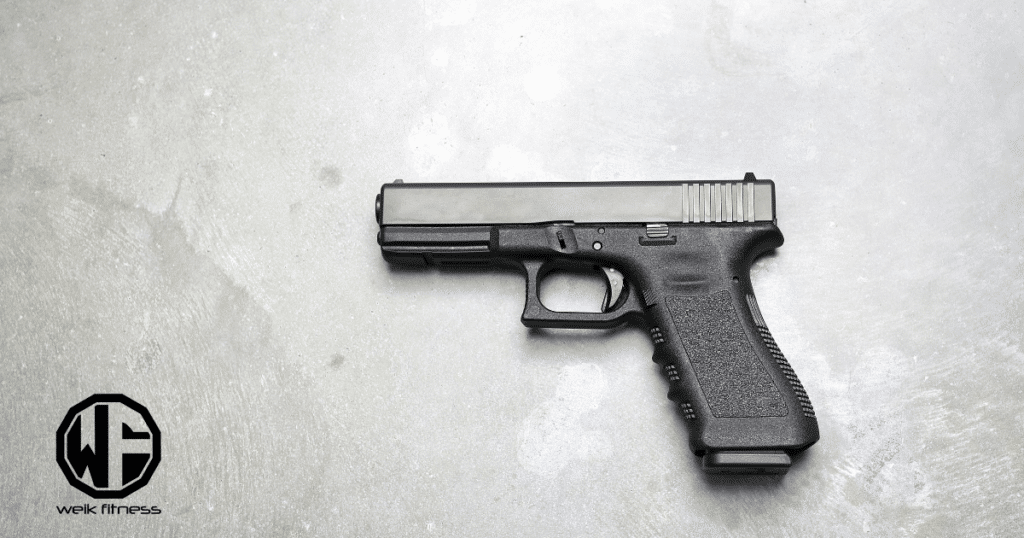
Appendix carry allows quick access to the firearm, and I truly believe the advantages of the appendix position and the several pros outweigh any negatives you may find. It enhances concealment, offering constant control over the weapon.
Compared to other carry methods and carry concepts, it’s not any more dangerous than any other carry option you may already be using. It’s simply another way to carry concealed that has a ton of benefits and advantages, especially when it comes to speed and working from the ground or seated.
1. Rapid Weapon Access
I’ve been carrying appendix for years now. I like the fact that appendix carry places my firearm in front of my body. What sets it apart is how fast I can reach my firearm, no matter if I’m standing or sitting.
This carry method puts the gun right in front of my hip, making it simpler to grab quickly, and allows for a much faster draw speed than having the firearm anywhere else on my waistline.
In situations where seconds count, this could be a lifesaver.
Using an AIWB (appendix inside-the-waistband) holster makes this even better — specifically, an inside the waistband holster is a must in this position, as having it outside the waistband would not work. These comfortable holsters are made to fit snug and stay hidden under clothes but still let me draw my weapon with speed.
From my experience, whether I am in a car or walking on the street, maintaining control over my firearm feels effortless. It’s clear why many people looking into concealed carry find this method appealing who want to carry every day.
2. Enhanced Concealment
Appendix carry offers superior concealment and reduced visibility compared to other positions. Placing the firearm in the front of the waistband minimizes the likelihood of bulging or showing through clothing.
When discretion with your self-defense weapon is crucial, this approach is highly effective. Additionally, having it in the front of your body is a place where people are less likely to try and touch you or even stare. If you’re a dude, a female may glance down and perhaps see “gun dick” protruding from your pants, but most of the time, they are not a threat to you.
And men will not look at another man’s front, so you have no issue with someone seeing any type of printing when carrying appendix.
RELATED: Beyond Concealed with Deep Concealment Holsters For EDC
Furthermore, this position facilitates discreet storage of a spare magazine adjacent to the firearm, ensuring the preservation of a tactical advantage without disclosing preparedness.
Moreover, its positioning at the front of the waistband makes appendix carry particularly advantageous when wearing fitted clothing, as it minimizes visible printing in comparison to other carry methods.
3. Constant Control Over Firearm
Constant control over the firearm is key. It’s vital for personal safety. This carry position allows me to always keep my gun in check, reducing the risk of someone taking it from me, which is an aspect of why I like appendix carry.
With this position, I can quickly access my weapon when needed. In dynamic situations, like grappling or close combat, it provides better retention compared to other positions. Plus, it’s easier to guard against someone trying to snatch your gun away.
4. Comfort and Adaptability
Some people say that appendix carry can be uncomfortable. Sure, but appendix carry also puts your firearm in a better position on your body. That said, using an AIWB holster that works with your body will make appendix carry much more comfortable when having a gun in the appendix position.
Appendix carry is about comfort and adaptability. It’s an easy-to-access, comfortable way to conceal a firearm securely. This position is particularly well-suited for EDC lovers who need to feel at ease carrying their self-defense tools wherever they go.
The concealed placement of the firearm makes it convenient yet easily accessible when needed — this positions the gun in a place where it can efficiently be drawn without any hindrance.
Moreover, with the right gear and proper practice, appendix carry offers a balanced mix of comfort and accessibility.
Situational Benefits of Appendix Carry
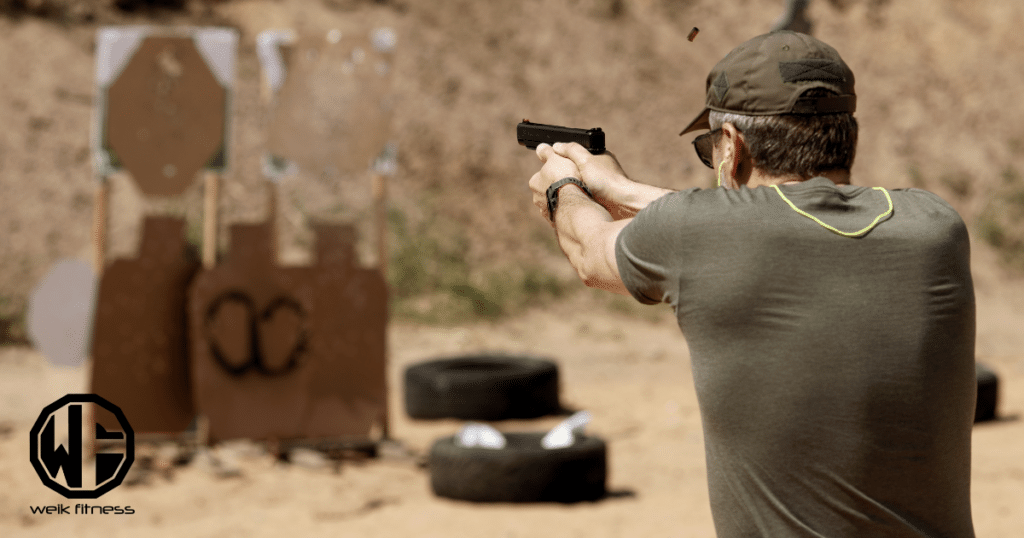
Appendix carry allows for easy sitting and driving — offering comfort and accessibility in everyday situations. I’m someone who sits at a desk all day, so having an option that allows me to sit comfortably is crucial (otherwise, I’d be less likely to carry).
1. Ease in Sitting and Driving with Concealed Carry AIWB Holster
Appendix carry offers significant ease and comfort while sitting or driving. By positioning the firearm in front of the hip, it allows for easier access compared to other concealed carry methods.
With some practice and a good holster, it feels natural whether seated at a desk or behind the wheel. The right gear improvement also plays a crucial role here — properly designed holsters specifically enhance comfort during extended periods of sitting, ensuring safety and practicality on the road.
When sitting or driving, accessing your firearm quickly is essential — it could be a matter of life and death. That’s why appendix carry stands out as an ideal choice for everyday carry enthusiasts who prioritize accessibility without compromising comfort.
2. Unobstructed Draw in Close Combat
Drawing your firearm quickly and efficiently is crucial in close combat situations. The appendix carry position allows for an unobstructed draw, ensuring rapid access to your weapon when every split second counts.
This positioning minimizes the risk of snagging on clothing or other obstacles during a high-stress encounter, enabling you to seamlessly and swiftly bring your firearm into play. In such scenarios, the advantage of unimpeded access can be pivotal in gaining the upper hand and potentially averting a threat.
A study by self-defense experts indicated that traditional IWB carry methods may present greater hurdles when it comes to drawing rapidly in close quarters compared to the unobstructed draw offered by the appendix position.
When milliseconds matter most, having clear and immediate access to one’s firearm can profoundly influence the outcome of an altercation. Therefore, understanding how appendix carry facilitates an unhindered draw in close combat is essential for those seeking effective concealed carry solutions.
Additionally, if you get knocked onto your back or pushed up against a wall, if you carry behind your hip, you’re at a disadvantage as you’d be lying on or pushed against your firearm.
In appendix carry, you can be on your back or up against a wall and still have easy access to your pistol.
3. Minimal Interference with Daily Activities
Appendix carry allows for easy access to the firearm and causes minimal interference with daily activities. It’s comfortable, keeps me in control of my gun, and provides enhanced concealment.
Sitting and driving are hassle-free, and there’s no obstruction during close combat. The holster placement ensures that my weapon is easily reachable without impeding movement. With the right gear and practice, safety concerns about appendix carry can be effectively addressed.
This method offers practical benefits for everyday life, making it an appealing choice for those who prioritize both self-defense and a busy lifestyle.
Overcoming Common Misconceptions & Disadvantage of Appendix Carry
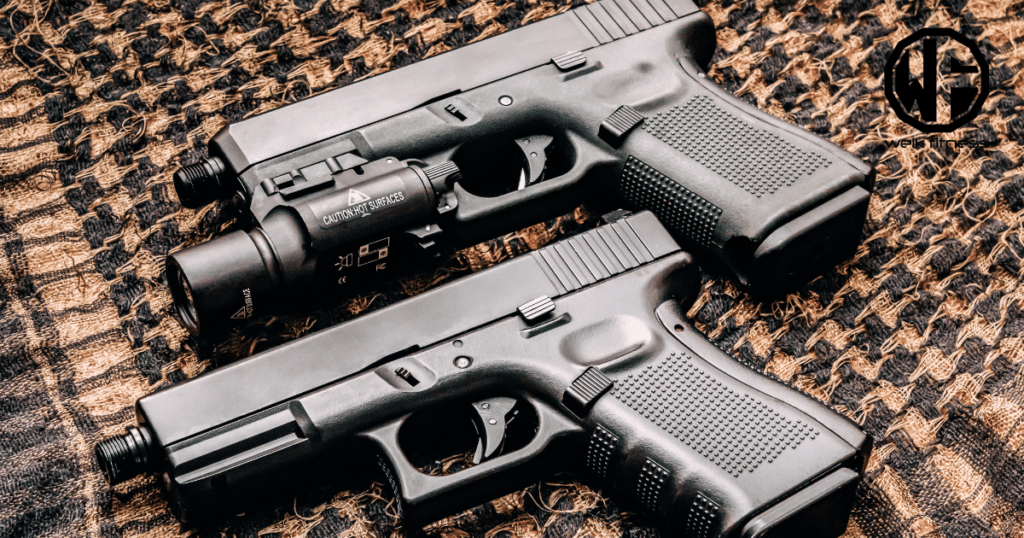
Appendix carry often raises concerns about safety, but with proper training and the right gear, it can be as safe as any other method. Comfort is another common worry, but with a quality holster and practice, appendix carry can be both secure and comfortable.
With the right approach, these misconceptions around appendix carry can be effectively addressed to reveal its considerable advantages.
Safety Concerns Addressed
Carrying a firearm in the appendix position raises safety considerations, according to some people. When standing, the muzzle is directed towards my pants, and when seated, it points even further away from my body.
This situation can be a concern if I lack good control over handling my weapon. Traditional inside-the-waistband carry could also present hazards as the muzzle points toward the leg during the draw.
To address these issues, proper firearm handling is essential.
I’ve come to understand that comprehending proper firearm positioning and having dependable holster gear help me feel more secure with carrying in this position. It’s essential to prioritize safety by selecting quality holsters and diligently practicing safe re-holstering techniques to avoid any accidental discharge incidents.
Appendix Carry Comfortably with Proper Gear and Practice
It should go without saying, but your gun and holster need to be compatible. Make sure the holster is molded to fit your exact gun and model.
Comfort in appendix carry relies on proper gear and consistent practice. Quality holsters such as the Phlster Pro, with the MonoBlock, ModWing, and Wedge components, significantly enhance comfort levels. Jon Hauptman did a great job designing this holster long with his Enigma holster for beltless carry.
RELATED: PHLster Enigma — The Last Glock Holster You’ll Ever Need
Another fantastic holster that I would recommend is the First Wave Trempendix. It offers a great AIWB holster with a large nylon washer that acts as a wing, a mini-bucket for easier reholstering, a wedge for better concealment, a DCC Mod 4 Shorty clip, and the ability for the clip to rotate 12 degrees while you’re wearing the holster to allow for added comfort rather than having a stationary holster and gun that doesn’t move with your body (which I think is super cool).
Additionally, investing in top-tier accessories like wedges can notably improve user experience. Also, ensure you have pull-the-dot loops or a quality belt clip for your holster. Personally, I like Discrete Carry Concept clips the best out of them all. Some people also like the UltiClip.
Practicing safe holster positioning and re-holstering techniques is crucial for comfort during appendix carry. A firearm carried in the appendix position requires a quality gun belt to maintain stability.
It is essential to select appropriate firearms suited for this style of concealed weapon carry. Through firsthand experience, I’ve found that adopting these best practices ensures both comfort and safety while utilizing the appendix carry method.
Choosing the Right Gear and Appendix Carry Holsters for Appendix Carry
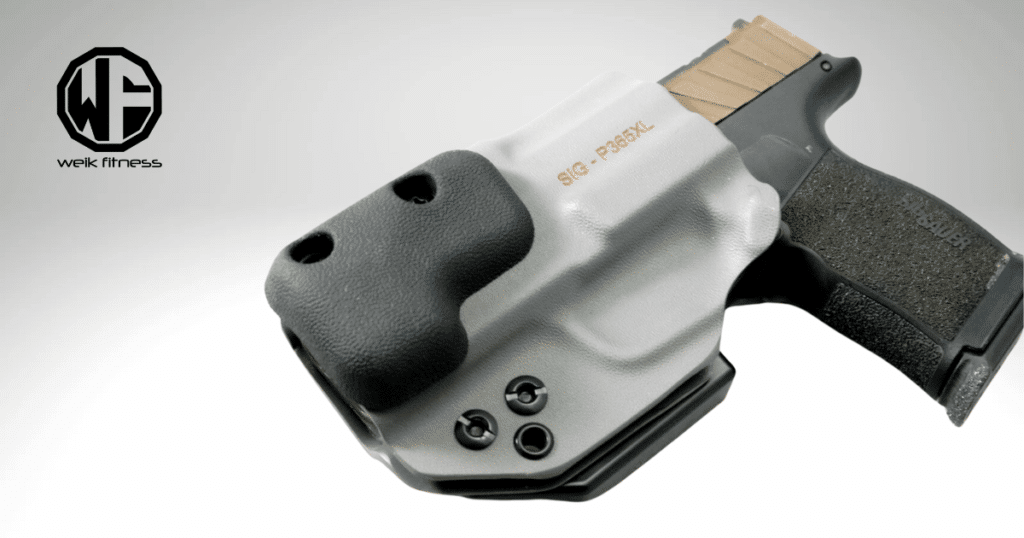
Choosing the right gear for appendix carry requires carefully selecting a high-quality holster that securely retains the firearm. Moreover, choosing a reliable firearm suited for concealed carry is paramount.
Understanding how essential the proper selection of a sturdy and durable gun belt tailored to support appendix carry is crucial to overall success in this form of self-defense.
1. Importance of a Quality Holster
As mentioned above regarding my holster recommendations, having a quality holster is crucial for appendix carry. It guarantees safe and secure firearm retention, preventing accidents. In terms of safety, a good holster should enable single-handed re-holstering — ensuring the gun is put away swiftly and securely.
RELATED: T Rex Arms Sidecar Holster — All-in-One Concealment System
Moreover, durability is crucial. Kydex holsters are suggested for their toughness. I’m not a fan of leather holsters or that nylon garbage that’s out there. Again, I particularly favor Phlster and First Wave because of their design features that improve both comfort and security.
These factors are the foundation of a successful appendix carry experience — after all, a well-designed and durable holster not only protects your weapon but also enables smooth access in any situation.
2. Selecting the Appropriate Firearm
Selecting the right firearm for appendix carry is crucial. I suggest opting for a compact handgun that balances concealability with firepower, such as the S&W M&P Shield series, a Glock 19/19X/43X/48, or the Sig Sauer P365 series.
These models provide ample stopping power while being easily concealable. I would recommend you go to a range and rent some of these to get some time with them and figure out which you shoot best.
When choosing a concealed carry firearm for AIWB, factor in aspects like size, weight, grip comfort, and trigger safety. Seek out firearms specifically designed for concealed carry to ensure they fit comfortably in an appendix holster and provide a smooth draw without sacrificing control.
Always prioritize safety and choose a firearm you’re comfortable handling and shooting effectively under stress.
Keep in mind when selecting your firearm’s caliber that it should be suitable for self-defense scenarios while ensuring manageable recoil for precise shots in close-quarter engagements.
3. Importance of a Proper Gun Belt
A good gun belt is crucial, especially if carrying heavier firearms with appendix carry. It balances comfort and safety, making appendix carry easier.
By choosing the right gear, such as a quality holster and firearm, combined with a proper gun belt, I can ensure my appendix carry is safe and comfortable. The ability to easily adjust my belt based on the situation will make it more convenient for me to carry my firearm in an effective manner.
RELATED: Concealed Carry Comfort — How to Select the Best Gun Belt
A belt that I wear 99% of the time is an Anson Belt and Buckle concealed carry belt. I absolutely love this belt. It’s very similar to a Kore Belt, Nextbelt, Groove Life, and similar micro-adjusting (ratcheting) type belts. If you’ve never tried one, I highly recommend it. Also, I’m a huge fan of SOE Belts. John Willis is known for his battle-proven belts and he’s one of the best in the industry when it comes to this kind of stuff.
Techniques for Effective Appendix Carry
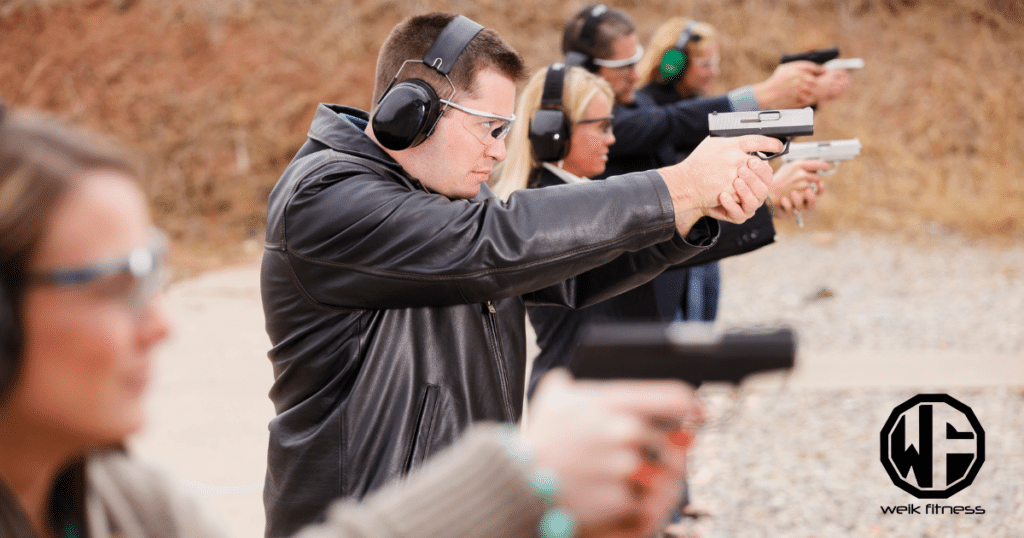
To ensure effective appendix carry, position the holster slightly to the side for optimal comfort and accessibility. Practice safe re-holstering techniques to minimize the risk of accidental firearm discharge.
1. Proper Holster Positioning
Positioning the holster in the front of your waistband around twelve, one, or two o’clock ensures quick access to your firearm. This placement also minimizes any chance of interference with daily activities.
When I gear up, I ensure my Kydex holster rides at the right height for a comfortable draw.
I make sure to carry it in front of my hip and always position it properly within my appendix region. Remember that the 1-2 o’clock position is crucial for effective appendix carry — providing rapid weapon access and enhanced concealment while maintaining constant control over your firearm for self-defense readiness.
2. Safe Re-holstering Practices
Safe re-holstering is crucial for appendix carrying. When re-holstering, I ensure my trigger finger stays indexed outside the holster. It’s vital to maintain visual control and gently guide the firearm into the holster until you hear the “click” of the retention grabbing your frame.
In my experience, a good guideline is to prioritize accuracy over speed when re-holstering. After clearing garments, I align the muzzle and insert slowly, avoiding any abrupt movements.
This ensures safety and minimizes risks associated with negligent discharges. Implementing this method enhances safe operation while appendix carrying.
Throughout training, I’ve learned that a deliberate approach is key — engaging muscle memory in slow, intentional motions creates safer habits during re-holstering situations.
Are You Ready to Try Appendix Carry?
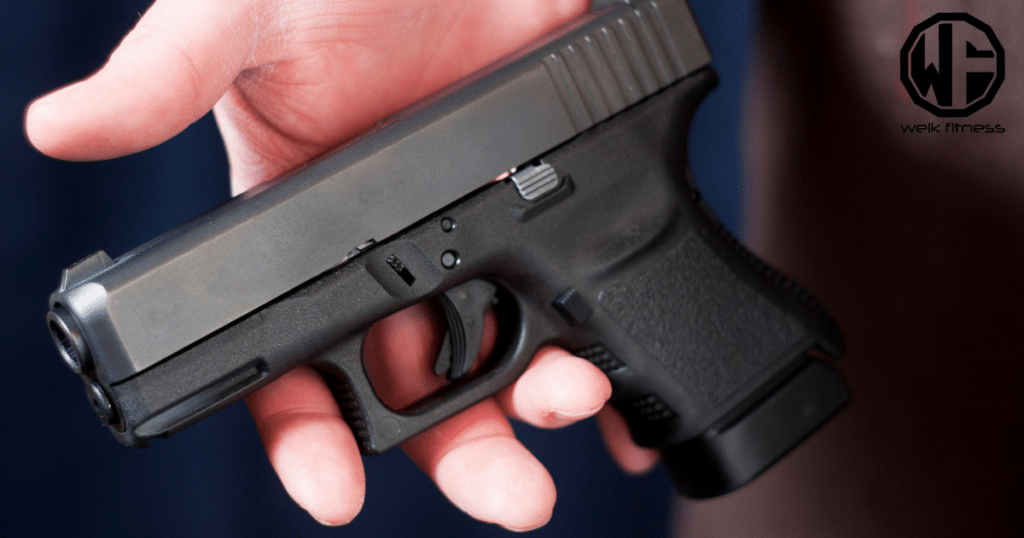
Hopefully, you got some value from this guide to appendix carry. After understanding the appendix carry and its advantages over other concealed carry positions, it’s clear that it provides rapid weapon access, enhanced concealment, and constant control over the firearm.
The situational benefits also make it stand out with ease in sitting and driving and unobstructed draw in close combat. By addressing common misconceptions, choosing the right gear, and mastering effective techniques for carrying safely, I firmly believe that appendix carry emerges as the best concealed carry position suitable for self-defense enthusiasts who prioritize comfort, accessibility, and security.
As a side note to close out this article, if you want to support our website and are in need of any tactical gear (or any product for that matter), anything you purchase using our links below will provide us with a small commission. We don’t charge for our free content and our goal is to keep it that way. We don’t have a Patreon account to put things behind a paywall, nor do we sell pics of our feet on OnlyFans.
If you choose to use the links below and make a purchase (at no additional cost to you), we greatly appreciate your support as it helps us continue to publish free content (like this article) on our website:
- Optics Planet (use code SAS5 at checkout for 5% off)
- Amazon
We have also partnered with CCW Safe. It’s the concealed carry coverage that I personally have for myself and my family in the event we need to defend our lives. Feel free to use our CCW Safe link to sign up and get some coverage to protect yourself and your family.
Also if you have a product you would like us to check out and potentially review, please contact us and let’s discuss.


